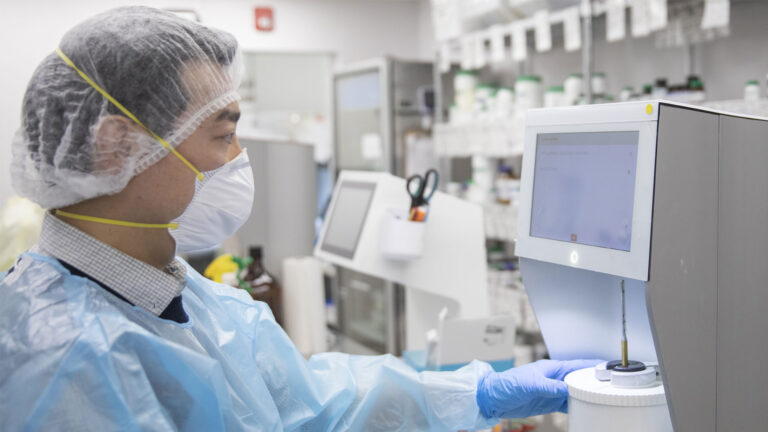
The standards referenced in the article below are out of date as of February 1, 2025. Please refer to ACP’s new standards for up-to-date information.
As new technologies emerge and patient expectations change, pharmacists and pharmacy technicians (regulated members) have seen a shift in how prescriptions are transmitted from prescriber to pharmacy. Although there are different methods that are acceptable, regardless of the method used, regulated members are required by Standard 6 of the Standards of Practice for Pharmacists and Pharmacy Technicians to always determine that the prescription is current, authentic, complete, and appropriate before dispensing. Additionally, regulated members have a responsibility to protect the confidentiality of the patient and to ensure that accurate records are created and maintained.
What methods of prescription transmission are acceptable?
Prescriptions can be provided to pharmacies in various formats:
- handwritten, signed, and provided to the patient or faxed directly to the pharmacy from the prescriber;
- produced by computer and hand-signed by the prescriber or affixed with an electronic signature that is initialled by the prescriber, and then provided to the patient or faxed directly to the pharmacy from the prescriber;
- faxed directly from a password-protected electronic medical record (EMR) where the prescriber’s password protocol is the prescriber’s direct authorization in absence of a signature;
- issued and transmitted via secure messaging in a closed electronic system (e.g., PrescribeIT) that enables monitoring and shared access by authorized prescribers and dispensers; or
- provided to the pharmacy verbally by telephone by the prescriber or their authorized intermediary*.
What is a valid signature?
- A valid signature enables the regulated member to verify the authenticity of a written prescription.
- What constitutes a valid signature is dependent on the method of transmission:
- Prescriptions provided directly to the patient, whether handwritten or computer generated, to be presented to the pharmacy must be signed or initialed with a fresh signature from a pen.
- Prescriptions faxed to a pharmacy must have a fresh signature from the prescriber. These prescriptions may be printed and signed with a pen or signed with a digitally captured fresh signature that is unique to each prescription. An existing electronic “stamp” signature is not acceptable unless initialled by the prescriber.
When is an EMR-generated electronic signature acceptable?
- Prescriptions directly transmitted to the pharmacy using secure messaging in a closed electronic system such as PrescribeIT do not require a signature.
- Prescriptions faxed directly to a pharmacy from a password-protected EMR are acceptable without a fresh signature since the prescriber’s password acts as the method of direct authorization. In such cases, however, the regulated member must be certain that the prescriber’s EMR meets the requirements before accepting the prescription.
Can a patient provide an image or description of a prescription in advance?
For a prescription to be filled and dispensed, the original prescription must first be obtained by the pharmacy via one of the acceptable methods of transmission.
It is not acceptable for a regulated member to prepare a prescription in advance of obtaining an original prescription based on being provided an image to the pharmacy by text, email, or mobile app, or the patient reading a prescription over the phone or faxing a copy to the pharmacy. Based on such requests, regulated members are permitted to check their inventory to see if stock is available or confirm if a drug is covered by a third party payer; but the original prescription must be first obtained before a pharmacist can conduct an assessment or before a regulated member can create a patient record, enter information into Netcare, or dispense the medication.
It is also important to remember that even for these limited purposes, use of any new technology to transmit prescription images or other patient information must first be reviewed by the Office of the Information and Privacy Commissioner (OIPC) in a privacy impact assessment (PIA). Even for those pharmacies with a recently completed PIA, starting the use of this type of technology requires a new PIA with the OIPC. Emails and texts are not secure and, even when a patient provides prior consent regarding the collection, use, and disclosure of their health information, regulated members are still obligated to comply with all health information requirements found in the Health Information Act and the ACP Code of Ethics.
It is not appropriate for a pharmacist to complete an assessment and dispense a prescription without establishing a professional relationship with the patient or their designate that enables the pharmacist to confirm their identity when receiving the filled prescription.
Processing and preparing a prescription before obtaining the original increases the risk of error and diversion. As it is the patient who is responsible for taking the photograph of the original prescription, there is the potential that relevant material on the prescription may be inadvertently removed leading to error, or purposefully removed leading to diversion.
Similarly, processing and preparing a prescription before obtaining the original may lead to the creation of false, inaccurate, or duplicate records. Following are examples of how records may become inaccurate:
- If the pharmacy processes a prescription without the original and the patient then takes the original to another pharmacy, duplicate records may be created with both the patient’s Netcare records and third-party insurer records.
- A time delay between the time of processing and pickup may lead to a record created in Netcare without the pharmacist having confirmed the authenticity of the prescription.
With more and more pharmacies relying on real-time integration with Netcare, this problem is accelerated because processing a prescription means a record is created immediately in Netcare. Pharmacies are required to obtain and retain the original prescription before any records are created or uploaded to Netcare.
* There is greater risk associated with the use of intermediaries and this method of prescription transmission should only be used if other methods are unavailable and a delay in transmission might harm patient care.




